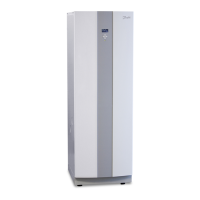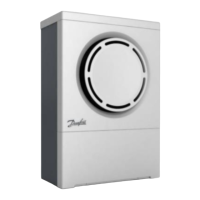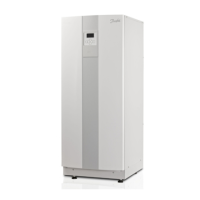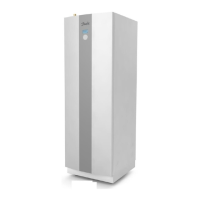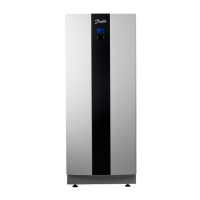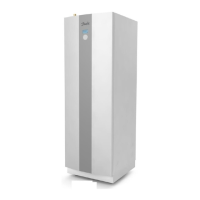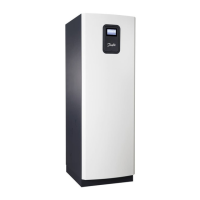Cause Troubleshooting Remedy
12. Overfilled refrigerant circuit. Using manometer apparatus and thermometer,
check that the unit’s overheating is correct for
the specific refrigerant.
Follow the correct procedure (depend-
ing on type of refrigerant) to add the
correct amount of refrigerant.
If there appears to be a leak in the refrig-
erant circuit, carry out leak tracing and
any necessary corrective action.
13. Blocked condenser on the water side. If there is no strainer in the heating system,
there is a risk of dirt sticking in the condenser
and blocking it. Unfortunately there is no easy
way of checking if the condenser is blocked.
You can carry out a test by allowing the com-
pressor and circulation pumps to remain in
operation and after a while, check that the
delivery pipe becomes hot and that the circula-
tion pumps work (for circ.pumps with a venting
screw, unscrew it and feel if the pump rotor
rotates using a screwdriver).
Then read the temperature on both connection
pipes to the condenser:
If the temperature difference is <3°C, the con-
denser is probably blocked.
If the temperature difference is 3-13°C, it is
probably not blocked.
If the temperature difference is >13°C, the con-
denser is probably blocked.
If the condenser is thought to be
blocked, try flushing it. If this does not
work, it must be replaced
14. Blocked condenser on the refrigerant
side.
Using manometer apparatus and thermometer,
check that the unit’s overheating is correct for
the specific refrigerant.
If the condenser is thought to be
blocked by oil for example, try blowing
nitrogen through it to release the oil.
If this does not work, it must be replaced
Problem – Alarm MS (motor protection)
Cause Troubleshooting Remedy
1. Phase drop or blown fuse. Check that all phases are present on the termi-
nal block for incoming supply. If not, check the
fuses in the cabinet.
Also check that all wiring is secure, if screw
terminals are used they must be properly tight-
ened, if phoenix flat spring terminals are used,
the cables must be secure in the correct hole
with load on the cable.
If any of the phases are not present, check
backwards towards the building’s main
electrical cabinet. If there are no phases
there, contact the network supplier.
2. Defective soft-starter. Measurement check and establish that when
the control computer gives a signal (there must
be voltage between A1 & A2 on the soft-start-
er), the soft-starter releases all three phases
down to the compressor.
If the soft-starter does not release the
phases when it receives signals from the
control computer, replace it.
3. Defective contactor. Measurement check and establish that when
the control computer gives a signal (there must
be voltage between A1 & A2 on the contactor),
the contactor releases all three phases down to
the compressor.
If the contactor does not release the
phases when it receives signals from the
control computer, replace it.
4. Defective or incorrectly set motor protec-
tion.
Use a hook-on meter to establish when the
motor protection deploys, check what the
motor protection is set to. Compare with the
table.
If the motor protection is defective,
replace it.
If incorrectly set, adjust to the correct
value.
5. Cable break. Check the supply to the motor protection//
soft-starter/compressor.
If a cable is damaged, replace it.

